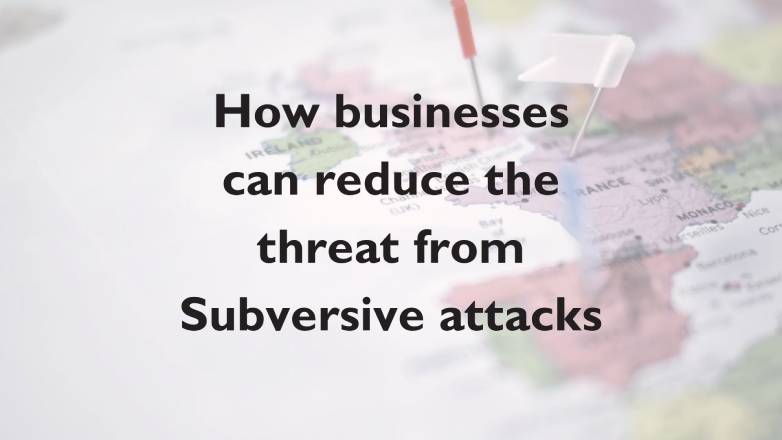
How businesses can reduce the threat from Subversive attacks

Across Europe, security services are on high alert to a potential increase in subversive attacks, following a spate of arson and sabotage strikes on infrastructure and businesses in the Baltics, Germany and the UK.
Recent examples include a fire at a homeware store in Lithuania in May, which the Polish Prime Minister suggested may have been started by a foreign saboteur; investigators alleged an arson attack in London showed signs of overseas involvement; an inferno destroyed Poland’s biggest shopping mall and attempted sabotage on a military facility in Germany.
The threat from subversives is on the increase with almost half (44%) of European Chief Security Officers (CSOs) expecting to be impacted by this group, up from a third in the previous year. 447 CSO were surveyed in Europe for G4S’s first-ever World Security Report, which surveyed 1,775 CSOs in 30 countries globally.
CSOs from Austria were the most concerned in Europe about being impacted (60%).
Noah Price, G4S Academy International Director, said: "The anticipated rise in subversive threats across Europe signifies a critical juncture for corporate security. These threats are becoming increasingly more prevalent, so businesses must adopt a proactive and comprehensive approach to safeguard their operations and assets.
"Businesses must invest in physical security measures such as AI-enabled surveillance systems, fire suppression systems, and multi-layered access controls. This should be done in conjunction with cybersecurity measures and fostering a work culture of vigilance and security awareness."
What businesses need to do to reduce the threat:
Companies of all sizes can play a crucial role in preventing subversive threats against their organisation, and securing their country’s national infrastructure. Tips include:
-
Enhancing Cybersecurity Infrastructure: Invest in advanced cybersecurity technologies and ensure systems are regularly updated to protect against the latest threats. Implement multi-factor authentication, encryption, and regular security audits.
-
Physical Security Enhancements: In addition to cybersecurity, enhance physical security measures such as surveillance, access controls, and secure facilities to protect against sabotage and espionage.
-
Employee Training and Awareness: Conduct regular training sessions to educate employees about the latest security threats, phishing schemes, and safe online practices. Awareness is the first line of defence against subversive activities.
-
Incident Response Planning: Develop and maintain a robust incident response plan. This should include procedures for identifying, containing, and mitigating security breaches, as well as communication strategies for internal and external stakeholders.
-
Regular Risk Assessments: Conduct regular risk assessments to identify potential vulnerabilities and implement appropriate mitigation strategies. This should cover both physical and digital assets.
-
Supply Chain Security: Ensure that third-party vendors and suppliers adhere to stringent security standards. A compromised supplier can be a weak link that exposes your organisation to subversive threats.
-
Collaborate with Security Experts: Engage with security experts and participate in information-sharing networks. Collaboration with industry peers and security experts can provide valuable insights and enhance threat detection and response capabilities.
Concluding, Price said: “Proactively incorporating as many of the above physical and cyber security measures will deter saboteurs and threat actors before they strike. A preventative approach is the best approach and one that all organisations must look to foster.”
